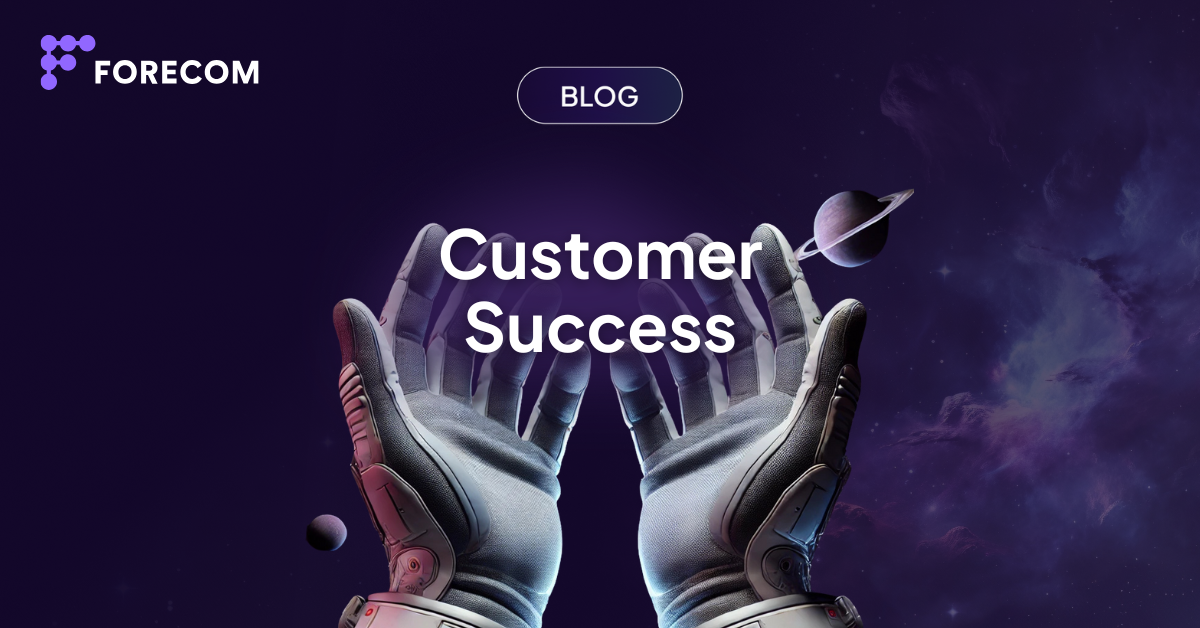In this blog post, we'll examine the essential elements of inbound marketing campaigns, delve into establishing SMART objectives, investigate crucial key performance indicators (KPIs) for evaluating success, and suggest vital tools for monitoring and analyzing your data.
Content
Setting SMART Goals for Inbound Marketing Campaigns
Key Performance Indicators (KPIs) for Inbound Marketing
Choosing the Right Tools for Tracking and Measuring
But, if you're new to the topic, I invite you to explore our previous blog posts where we thoroughly discuss the basics of inbound marketing and its best practices.
Inbound Marketing Overview
Inbound marketing is a strategy that focuses on attracting potential customers by creating valuable, relevant, and engaging content tailored to their needs and interests.
-1.png?width=565&height=478&name=inbound-vs-outbound-marketing-differences%20(1)-1.png)
Unlike outbound marketing, which typically involves pushing advertisements and promotional messages onto consumers, inbound marketing seeks to draw your audience in organically, nurturing relationships, and building trust along the way.
This approach can lead to increased brand awareness, improved customer loyalty, and ultimately, higher conversions and sales.
But how can you tell if your inbound marketing efforts are paying off?
That's where measuring and tracking success comes in.
Closely monitoring the performance of your campaigns will enable you to identify what's working and what needs improvement, allowing you to make data-driven decisions and optimize your strategies for long-term growth.
Setting SMART Goals for Inbound Marketing Campaigns
To effectively measure and track the success of your inbound marketing campaigns, it's essential to set clear, well-defined goals that align with your overall business objectives.
If you haven't heard about the SMART goals framework yet, you are in for a treat.

Let's break down what SMART goals entail:
1. Specific
Your goals should be clearly defined and specific, outlining exactly what you want to achieve.
Rather than setting a vague goal like "increase website traffic," specify the desired outcome, such as "increase organic website traffic by 25% in the next six months."
2. Measurable
A measurable goal is one that can be quantified and tracked over time. By setting measurable goals, you'll be able to gauge your progress, identify areas for improvement, and determine the success of your campaigns.
In our example above, the 25% increase in organic website traffic is a measurable objective.
3. Attainable
While it's essential to aim high and strive for growth, it's crucial to set goals that are realistic and attainable. Consider your current resources, time constraints, and any potential challenges when setting your goals.
An achievable goal is one that pushes you to perform better while remaining within the realm of possibility.
4. Relevant
Your inbound marketing goals should be relevant to your overall business objectives and contribute to your organization's success.
This alignment ensures that your marketing efforts support your company's growth and provide a meaningful return on investment (ROI).
5. Time-bound
Setting a deadline for your goals helps create a sense of urgency and keeps your marketing efforts focused.
A time-bound goal provides a clear timeframe for achieving your objectives, allowing you to track progress and make adjustments as needed.
SMART Goals Examples for Inbound Marketing
To give you a better understanding of how should specific SMART goals look like, here are some real-life examples:
1. SEO Example:
Increase organic website traffic by 20% within the next three months by optimizing on-page SEO, publishing high-quality blog posts three times a week, and promoting content through social media channels.
2. Lead Generation Example:
Boost the email subscription rate by 15% within the next two months by implementing a more engaging and prominent sign-up form on the website, offering an attractive ebook for free, and optimizing the call-to-action placements.
3. Email Marketing Example:
Increase the email open rate by 10% within the next 90 days by segmenting the email list based on customer interests, personalizing subject lines, and optimizing the sending time according to subscribers' time zones.
If you are starting from scratch, it may be difficult to estimate how much you should improve. For this reason, it is fine to roughly eyeball it and correct the numbers as you collect more data.
Key Performance Indicators (KPIs) for Inbound Marketing
Now that we've discussed the importance of setting SMART goals for your inbound marketing campaigns, it's time to explore the key performance indicators that will help you measure and track your progress.
KPIs are quantifiable metrics that enable you to gauge the effectiveness of your marketing efforts and make data-driven decisions for improvement.
Here are some essential KPIs to consider when measuring the success of your inbound marketing campaigns:
1. Website Traffic
Monitoring the overall traffic to your website is crucial for understanding the reach and visibility of your content. This KPI allows you to evaluate the effectiveness of your content strategy and identify opportunities for growth.
Be sure to track not only the total number of visitors but also the sources of traffic (organic, referral, direct, social, and paid) to gain deeper insights into your campaigns.
2. Organic Search Traffic
Organic search traffic refers to the number of visitors that arrive at your website through search engine results, excluding paid advertisements. This KPI is particularly important for evaluating the success of your SEO efforts and identifying potential areas for optimization.
3. Social Media Engagement
Tracking social media engagement, including likes, shares, comments, and follows, can help you gauge the effectiveness of your social media marketing strategy.
Higher engagement rates often indicate that your content resonates with your audience and that your social media efforts are driving traffic to your website.
4. Email Open and Click-Through Rates
For email marketing campaigns, open and click-through rates (CTR) are essential KPIs to monitor.
High open rates suggest that your subject lines are compelling, while high click-through rates indicate that your email content is engaging and effectively driving recipients to take action.
CTR is also an excellent way to monitor the effectiveness of your social media or PPC campaigns.
5. Leads Generated
The number of leads generated through your inbound marketing campaigns is a key indicator of success. By tracking the quantity and quality of leads, you can evaluate the effectiveness of your lead generation strategies and identify opportunities for improvement.
6. Conversion Rates
Conversion rates refer to the percentage of website visitors who complete a desired action, such as making a purchase, signing up for a newsletter, or filling out a contact form.
Tracking conversion rates helps you determine the effectiveness of your overall inbound marketing strategy and pinpoint any areas that may require optimization.
7. Customer Acquisition Cost
Customer acquisition cost (CAC) measures the cost of acquiring a new customer through your marketing efforts.
By monitoring CAC, you can assess the return on investment for your inbound marketing campaigns and ensure that your strategies are cost-effective.
Once you start using these metrics, make sure to compare the numbers against those from the previous months or even last year, as standalone data won't provide you with any comprehensive understanding.
Choosing the Right Tools for Tracking and Measuring
Taking advantage of the right tools is critical to measuring and tracking the success of your inbound marketing campaign. These tools will enable you to collect, analyze, and interpret your campaign data with ease.
Here are some popular tools to help you track the progress of your inbound marketing efforts:
1. Google Analytics
Google Analytics is a powerful and widely-used web analytics tool that provides detailed insights into your website's performance.
With Google Analytics, you can track advanced metrics such as unique visitors, pageviews, bounce rate, and average session duration.
Additionally, it allows you to monitor conversion rates, set up goals, and analyze user behavior, helping you optimize your website and content for maximum impact.
2. Customer Relationship Management (CRM)
CRM systems enable you to manage and track your leads throughout the sales funnel.
By integrating your CRM with your inbound marketing efforts, you can gain insights into the effectiveness of your lead generation strategies, monitor lead sources, and track conversions. Popular CRM tools include HubSpot, Pipedrive, and ActiveCampaign.
3. Social media analytics tools
Social media analytics tools help you measure the performance of your content on various social media platforms. They provide insights into metrics such as likes, shares, comments, and overall engagement.
Some popular social media analytics tools are Sprout Social, Hootsuite, and Buffer.
4. Marketing automation platforms
Marketing automation platforms enable you to create, send, and track email marketing campaigns with ease. These platforms provide valuable insights into email open rates, click-through rates, and other performance metrics.
By using marketing automation tools, you can optimize your email campaigns for higher engagement and conversions. Mailchimp, HubSpot, and ActiveCampaign are among the most liked platforms you can try.
It is vital to choose tools that align with your business's unique needs and objectives.
Each tool has its benefits and drawbacks, so make sure to do your research before purchasing any (or try them beforehand, some have a free trial).
Conclusion
Achieving success in inbound marketing requires setting SMART goals, focusing on critical KPIs, and utilizing the appropriate tools for tracking and analysis.
Through continuous learning and improvement, you can gain a competitive edge and foster greater prosperity for your company. The key to this process lies in implementing an effective reporting system that allows you to analyze and report on your progress
Frequently Asked Questions
1. What are the most important KPIs to track for inbound marketing campaigns?
Some essential KPIs to track include website traffic, conversion rates, click-through rates, social media engagement, and leads generated.
2. How often should I analyze the results of my inbound marketing campaigns?
While the frequency of analysis may vary depending on your specific goals and the nature of your campaigns, it's generally recommended to review your results at least monthly.
3. How do I choose the right tools for measuring and tracking my inbound marketing campaigns?
Select tools that align with your specific needs, goals, and budget. Consider tools for web analytics (e.g., Google Analytics), CRM systems (e.g., ActiveCampaign, HubSpot), social media analytics (e.g., Sprout Social, Hootsuite), and marketing automation platforms (e.g., Mailchimp, HubSpot).
4. How can I improve the conversion rates of my inbound marketing campaigns?
To boost conversion rates, focus on creating high-quality, relevant content that addresses your target audience's needs and pain points. Optimize your website's user experience and ensure clear, compelling calls-to-action.
Topics: Marketing Inbound Marketing


















